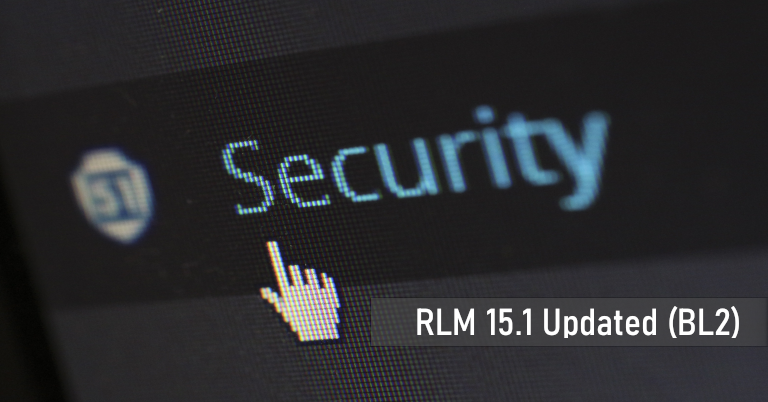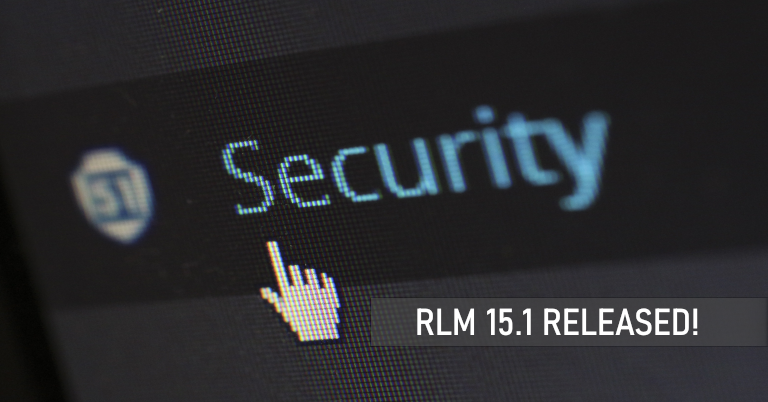Understanding metered licensing through Reprise License Manager (RLM) can significantly improve the way you manage and pay for software. This guide offers a clear, step-by-step breakdown, making the implementation of metered licensing straightforward and accessible.
What is a Metered License?
A metered license is a form of subscription licensing that grants the customer access to use the software for a predetermined number of something (hours, calculations, etc.) as specified in their quote during the subscription period. Specifically, software products under a metered license may be labeled with the word “Metered” in their name or include the abbreviation “MTR” at the end of their product number, distinguishing them from standard, unmetered subscription licenses.
How Does Metered Licensing Differ From Other License Types?
Metered licensing represents a flexible approach to software usage and payment, distinguishing itself significantly from other traditional licensing models. Unlike perpetual, subscription, or site licenses that often come with a flat fee for access, metered licensing is usage-based. This means the cost directly correlates with how much the software is used, offering a pay-as-you-go model that can provide more financial flexibility and efficiency for users.
Here’s a breakdown of how metered licensing differs from common license types:
Perpetual Licensing
- Perpetual Licensing: Offers indefinite access to a software version upon a one-time payment. It doesn’t account for the actual usage of the software.
- Metered Licensing: Charges based on the actual usage of the software, making it a cost-effective option for users with variable or unpredictable software needs.
Subscription Licensing
- Subscription Licensing: Provides access to a software for a recurring fee, typically monthly or annually, regardless of usage levels.
- Metered Licensing: Unlike this continuous expense, metered licensing only incurs charges according to the volume of usage, potentially lowering costs for light or irregular users.
Site Licensing
- Site Licensing: Allows an unlimited number of users within an organization to access software, usually at a fixed fee. This model benefits large organizations with high user counts but doesn’t consider individual usage rates.
- Metered Licensing: Is advantageous for organizations with fluctuating software needs, as it aligns costs directly with consumption, avoiding the overheads of unused licenses.
Metered licensing offers an adaptable and often more economically efficient alternative to traditional licensing models, particularly suiting businesses looking for scalability and cost control based on actual software usage.
What are the Benefits of Using Metered Licensing?
Metered licensing introduces several compelling advantages for both software vendors and their clients, emphasizing a pay-for-what-you-use model. This approach aligns costs directly with actual usage, offering a blend of flexibility, efficiency, and strategic insights. Here are the key benefits:
Cost-effectiveness: The standout advantage of metered licensing is its cost-effectiveness. Customers appreciate only paying for the software and services they truly use, which can lead to considerable savings, especially for businesses with variable demands. This efficiency eliminates the unnecessary expense associated with unused licenses.
Flexibility and Scalability: Metered licensing shines when it comes to scalability. It allows businesses to adjust their software usage up or down with ease, sidestepping the hassle of renegotiating license agreements or purchasing surplus perpetual licenses. This adaptability is invaluable for businesses in growth phases or those experiencing seasonal demand shifts.
Valuable Insights: This licensing model offers detailed insights into software utilization, enabling organizations to analyze how their teams use various applications. This data can guide more informed decisions regarding resource allocation, pinpoint training opportunities, and optimize software investments.
Simplified Operations: For software providers, metered licensing can simplify operational aspects. By transitioning to a usage-based pricing structure, companies can streamline billing processes and reduce the complexity of managing diverse license types. This approach also broadens their appeal to a wider customer base preferring the pay-as-they-go model.
Supporting Sustainability: Encouraging efficient software use, metered licensing can contribute to environmental sustainability. Organizations become more conscious of their software consumption, potentially reducing energy usage and minimizing electronic waste through better resource management.
Enhanced Market Competitiveness: For software vendors, metered licensing can sharpen their competitive edge. Offering flexible, modern pricing models can differentiate their product in a saturated market, making it more attractive to a varied clientele, from burgeoning startups to established enterprises.
What is the Process of Implementing Metered Licensing with RLM?
Implementing metered licensing with Reprise License Manager (RLM) involves a straightforward process designed to fit seamlessly into your application’s existing licensing structure. Here’s how you can get started with metered licensing using RLM and RLM Cloud:
1. Understanding Metered Licenses
Metered licenses, sometimes referred to as consumptive licensing, are designed to count the number of times a specific event occurs within your application—like the number of pages printed or the amount of time the application runs. This type of licensing is akin to a “postage meter” for software, where the application consumes from a pre-loaded meter count, and when the meter depletes, subsequent checkout requests fail.
2. Specifying a Metered License
To specify a metered license in RLM, you won’t need to alter your application code. The usual rlm_checkout() function is used, but when creating the license, you indicate that it is metered rather than node-locked or floating. The RLM system takes care of the rest, ensuring that metered licenses cannot roam or be metered if certain attributes (e.g., hold, min_checkout, client_cache) are specified.
3. Setting Up Meter Parameters
When setting up a metered license, you define it with the count keyword set to “meter”. Additionally, you can configure four optional parameters to control the metering:
- meter_counter: Specifies which meter counter is used.
- meter_dec: Determines the amount subtracted from the meter upon initial checkout.
- meter_period: Sets the time before an additional amount is subtracted from the meter.
- meter_period_dec: Indicates the amount subtracted every meter period.
4. Implementing Meter Counters
Meter counters are managed by the RLM license server, meaning every metered license requires a server to operate. Although RLM’s implementation stores meter counts in server files and allows users with web interface access to modify counts, using RLM Cloud ensures these meters are securely managed under your control. Because of this, Reprise recommends using RLM Cloud for metered licensing when possible.
5. Installation and Reporting
Upon installing the metered license and starting the license server, the server will create the necessary meter counter(s) with an initial count of zero. Metered licenses are then sectioned separately in the RLM web interface, where you can add to the meter count as needed.
For metered license checkouts, RLM logs an additional record for the meter decrement and each periodic decrement, facilitating post-use billing based on actual consumption. This detailed reporting allows clients to manage costs effectively during the billing cycle.
Implementing metered licensing with RLM provides a flexible and efficient way to offer your software, aligning costs directly with usage. By following these steps, you can easily integrate metered licensing into your application, offering a pay-as-you-go model that appeals to a wide range of customers. For more detailed information on implementing metered licensing with RLM, visit Reprise Software.
If you would like to see RLM’s metered licensing in action, see this blog post from one of our customers: CPFD Announces Virtually Unlimited Overflow Simulation Capacity Through Metered Licensing










